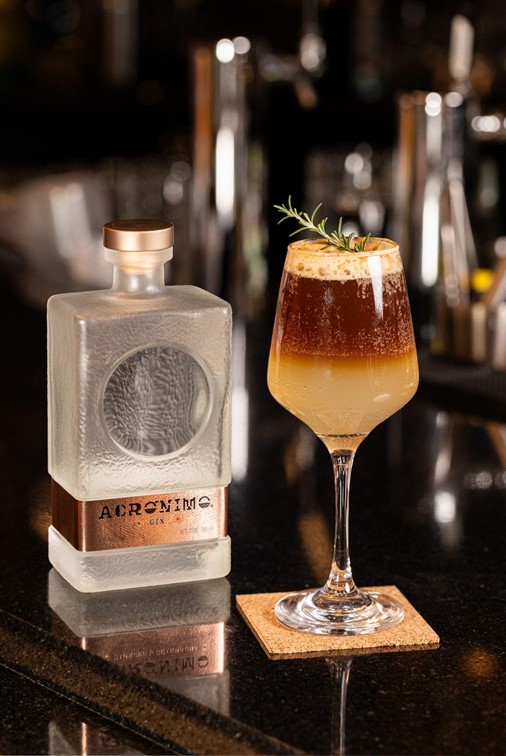How Gin Became Cool Again: The Return of a Classic Spirit

Gin was once an outdated relic that got stuck behind bars. But today, it has made its way back to premium cocktail menus once again. It has undergone a remarkable transformation to become a source of pride for small-batch distillers. Gin is now the number one choice for discerning drinkers worldwide.
But gin’s return to popularity is not just trendy branding or exotic taste. In this blog, we’ll discuss how gin went from an ancient medicine to a darling of spirits.
Table of Contents
What Defines Gin?
Gin is defined by juniper berries, which give gin its distinctive aroma and flavor. The name “Gin” also comes from the Dutch genever or French genièvre, both meaning “juniper.”
However, now distillers are also experimenting to make exotic botanicals with citrus peels and wildflowers. Even then, juniper berries remain the heart of gin, giving it a unique personality everyone loves today.
Why Gin Became Cool Again
Vodka overshadowed gin for much of the 20th century due to its smooth neutrality. But when global tastes started to change in the early 2000s, gin got a shot to make a comeback.
Here’s how:
Innovations by Distillers
Modern-day gin distillers do not abide by traditions. Even when juniper berries are non-negotiable, everything else is available for experiments. Distillers play with options like
- Pepperberries from Australia
- Kaffir lime from Thailand
- Coaster rosemary from California
Distillers use these botanicals to create layered gins that attract youth who want to experience different cultures.
Rise of Small-Batch Distilleries
Craft distilleries have flourished in the past decade. Independent producers from countries like the UK, the US, and Japan have learned how to play with gin’s flexibility to create exotic flavors. Many of these distillers also offer a create-your-own-gin experience to blend tourism with education and tastings.
Brand Storytelling and Design
Gin brands now stand out for not just their taste but also for their visual and emotional appeal. They use embossed glass bottles and poetic label copy to create a sense of identity and lifestyle. Gin is now seen as a design object as well as a drink. Making it perfect for collecting or showcasing on a home bar.
Gin is Now in the Hands of Modern Mixologists
Thanks to its depth and character, gin is once again popular in the world of mixology. It has become indispensable behind the bar with bartenders offering:
- Martinis with botanical flavors that offer a more expressive alternative to vodka.
- Negronis that encourage more customization and choices in cocktails.
- New-age classics like Clover Club and Bramble to attract new drinkers.
Bartenders are now using gin’s complexity to maintain an endless balance for drinkers. This is a trait that no other spirit can offer.
Will Gin Stay Trending in the Long Run?
If we look at gin’s history, its resilience shows its ability to stay in power. It went from medieval medicine to bathtub spirit and then became a cocktail bar essential. Gin has defined and redefined itself repeatedly over the years.
But nowadays, gin is all about innovation, conscious consumerism, and global creativity with botanicals. Drinkers now want spirits that have a story to tell and a purpose, making gin their answer. So distillers are now focused on capturing a place or a month that sets a mood. They are using native botanicals and traditional methods to create a personal narrative instead of drinks.
The world now craves authenticity, and gin is the only spirit that can provide both taste and tale.
Frequently Asked Questions
1. What makes gin different from other spirits like vodka or whiskey?
Juniper berries define gin as a dominant botanical; they also give it its piney and herbal flavor. While vodka is neutral in taste and whiskey is aged in barrels for depth, gin is distilled to offer an aromatic profile. However, gin’s wide use in cocktails is what really sets it apart from vodka and whiskey.
2. Why has gin become popular again in recent years?
Craft distilling and botanical creativity have revived gin in the last decade. Its renewed interest in cocktail culture is what boosted gin’s popularity. Unlike Scotch and Cognac, gin allows experimentation to make it a favorite for mixologists.
3. What are the key botanicals used in gin besides juniper?
Botanicals like coriander seed, angelica root, and cardamom are some of the key botanicals that are used in gin. However, juniper still remains an integral botanical. Craft distillers are also infusing local or exotic ingredients like native herbs, flowers, and berries.
4. What is “bathroom gin,” and is it still made today?
“Bathroom gin” refers to homemade or illicit gin that was produced during the 18th-century Gin Craze. They are made with low-quality spirits and added flavors. This made them too dangerous to consume. However, all commercially available gin is produced with safety and professional regulations.
5. Can gin be aged like whiskey or rum?
Yes, gin can be aged and is becoming a trend in modern gin distillation. Barrel-aged gins are rested in oak casks that can lend them vanilla, spice, or smoky notes. Aged gin can bridge the gap between gin and brown spirits. Now these gins are becoming popular in sipping or stirred cocktails like Negronis or Old Fashioneds.
